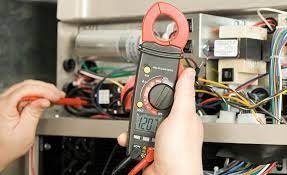Having a malfunctioning HVAC system is one of the most frustrating experiences any homeowner can go through. The lack of understanding surrounding how to properly troubleshoot these systems can be overwhelming, making it difficult to figure out exactly what the issue is and how to fix it.
To provide homeowners with better insight into their heating, ventilation and air conditioning systems, we’ve put together this comprehensive guide on HVAC troubleshooting 101.
Here, you’ll find expert-recommended steps for diagnosing common problems that arise in residential HVAC systems so you can restore your home’s comfort in no time.
If you need help with your HVAC system and live in the Oklahoma City area, check out https://www.trustsmartair.com/.
Check the power
The first step in any HVAC troubleshooting 101 guide is to ensure that the power source for your system is working properly. Start by checking the circuit breaker and resetting it if needed. If this does not resolve the problem, you may need to call an electrician to inspect the wiring.
If the circuit is functioning correctly, then you will need to check to make sure that the thermostat is connected properly and that it has power. For battery-powered thermostats, be sure to change out the batteries as needed.
Check the thermostat
If the power source appears to be working properly, then you need to check the thermostat. Make sure the settings are correct and that all wires are connected firmly. If there is any issue with the wiring or setting, this can cause your HVAC system to malfunction.
Also check your thermostat for moisture or condensation. This could be a sign that something is wrong with the insulation or ventilation in the house and should be taken care of as soon as possible.
If you have a programmable thermostat, make sure you have programmed it correctly and that all the settings are accurate.
Make sure the vents are open and that nothing is blocking them
It’s important to make sure that the vents in your home aren’t blocked and that there is enough air flowing through them. If something is blocking these vents, this can cause your system to overheat or shut off completely. You should also check around the ducts for any debris or dirt buildup, which can also cause issues with airflow.
If you have outdoor units, be sure to check them for any leaves or other debris that may be blocking the vents. And if there are windows in the same room as your HVAC unit, make sure they are opened to allow air to circulate freely.
Check the air filters and replace them if they’re dirty
Air filters play an important role in the functioning of your HVAC system. If they are dirty or clogged, it can cause a decrease in airflow and lead to hot spots or cold spots in certain areas of your home.
It’s important to check the air filters every month and replace them if they appear dirty. Additionally, you should check the blower motor and fan blades to make sure they are operating properly.
Check the ducts for leaks
Check your ducts for any signs of leakage. Leaks can cause air to escape, which can lead to an increase in energy costs and a decrease in air quality.
To check for leaks, you can use an infrared camera to detect any air that is escaping from the ducts. Additionally, you should check for any loose connections or cracks in the insulation that may be causing air to escape. If you find any leaks, it’s important to seal them as soon as possible.
If you suspect that there is a leak, you should call an HVAC technician to inspect the system and repair any necessary damage.
Check the refrigerant levels
Low refrigerant levels can cause your HVAC system to not operate properly. You should check the pressure gauge on the unit and make sure that it is in the proper range. If it is low, you should add more refrigerant to the system.
However, this is something that should only be done by a trained professional, as it can be dangerous if not done correctly.
Call a professional to help troubleshoot the problem
If you’re still having problems after following these steps, it may be time to call in a professional HVAC technician for further troubleshooting and Efficient HVAC maintenance. With their help, you can ensure that your system is running smoothly and efficiently so that your home stays comfortable all year round.
Conclusion
HVAC troubleshooting can be a tricky process, but with the right knowledge and tools, you can make sure your system is running correctly. Taking the time to check through each of these steps can help ensure that any problems are addressed quickly and efficiently.
If all else fails, however, don’t hesitate to call in a professional for further assistance. With the right help, your HVAC system will be back up and running in no time.

